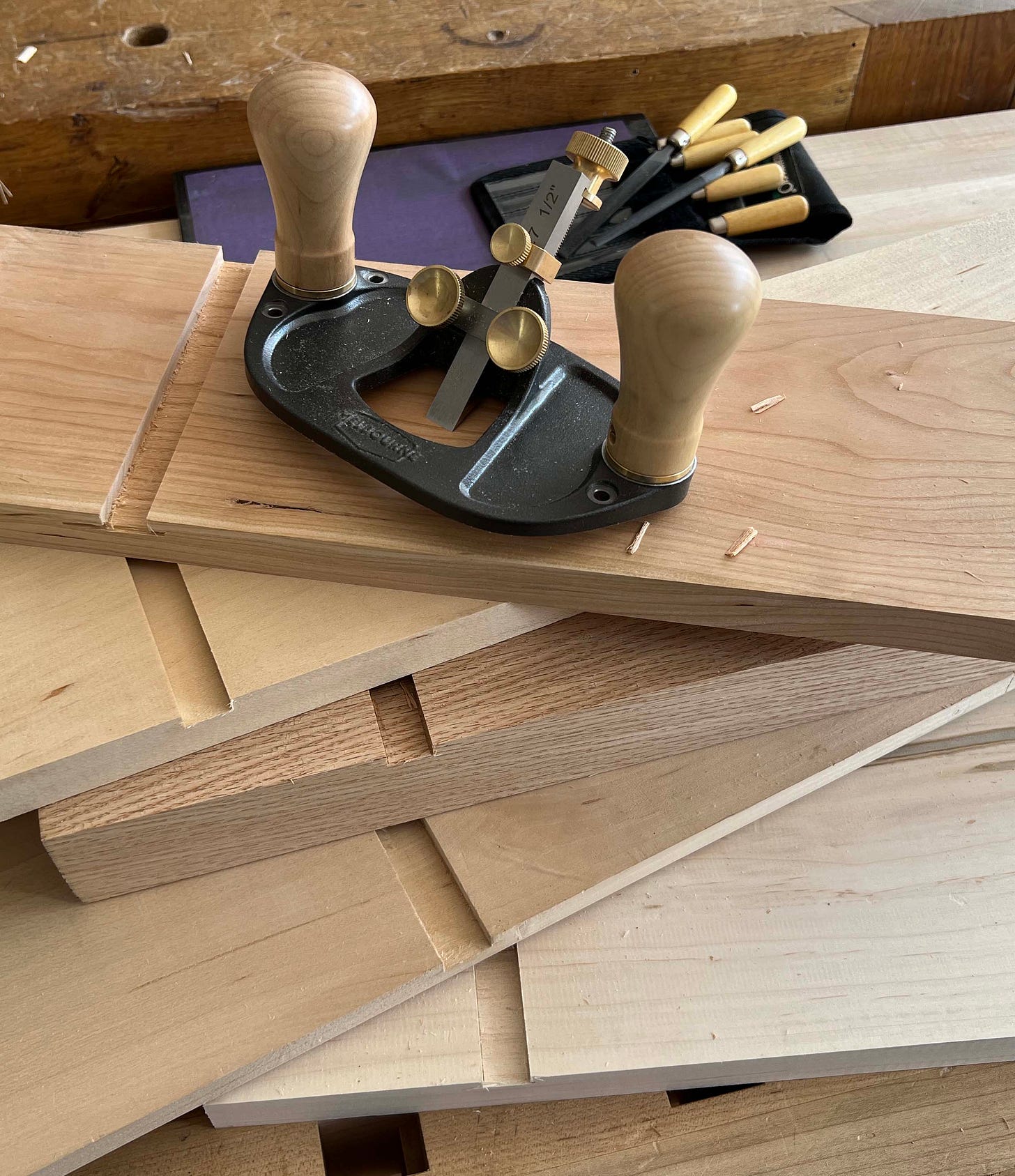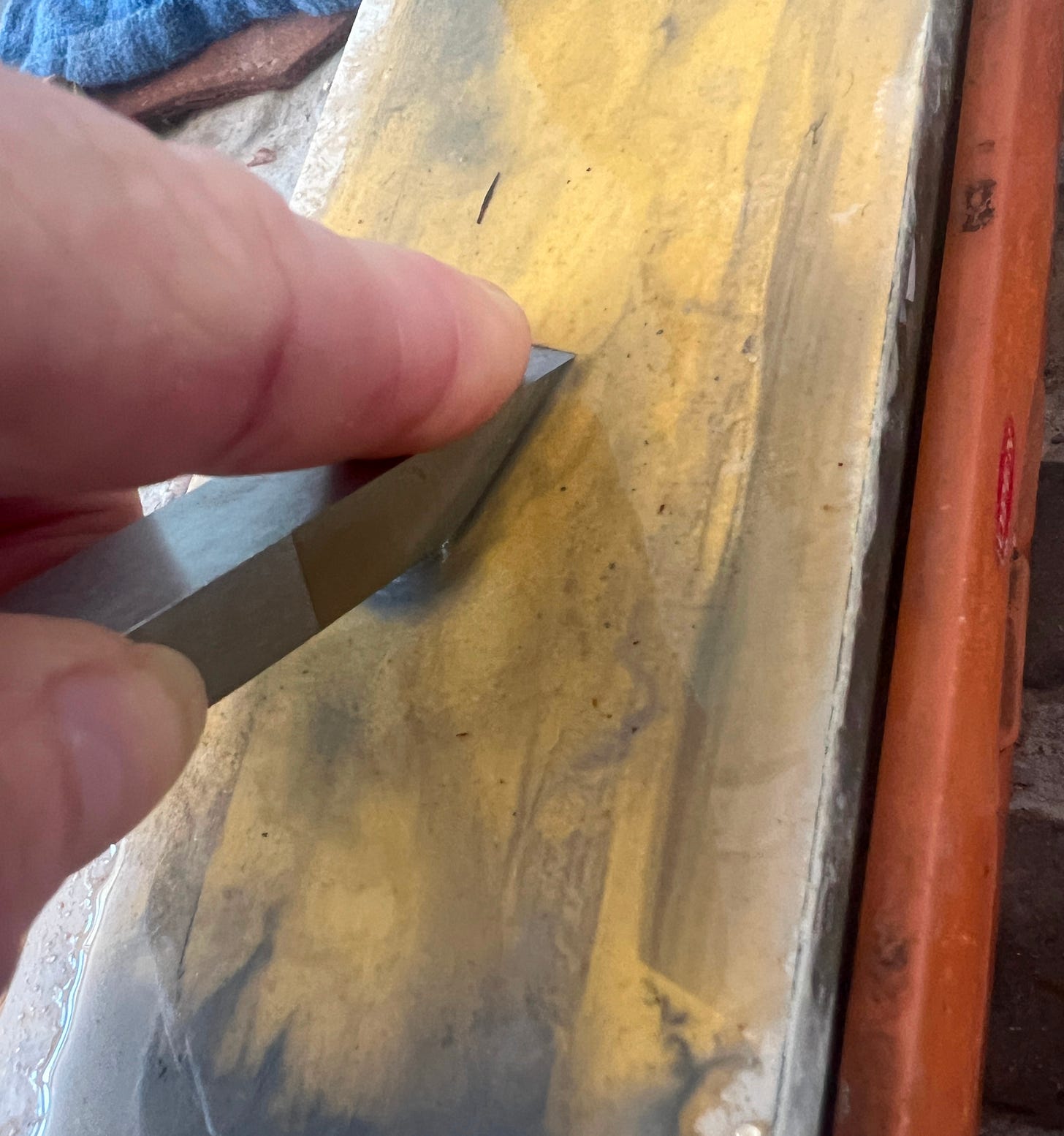Melbourne Tool Large Router Plane
The sole hurt me to the depths of my (admittedly shallow) soul.

If you’re price sensitive and not averse to some initial work to make this tool perform well, the Melbourne Tool large router plane is a decent choice. At $179, which includes the fence (that you will almost certainly never use1), it’s $57 less than the $236 of the Veritas large router plane (with the optional and unnecessary fence) and $71 less than the Lie-Nielsen (fence included, non-optional).
Also of note: The 1/2"-wide plow-plane-like blade of this 50° bevel-down tool arguably makes it perhaps a little less fussy to sharpen than the 25°-30° bevel-up L-shaped blades of the Lie-Nielsen and Veritas planes, because you can hold it as you would a chisel on the stones. And, the wide and long bevel of the standard blade has plenty of bearing surface to make freehand sharpening a snap. (Additional blade widths are available for all the planes mentioned here, and both Melbourne and Veritas offer blades in both metric and American customary units; Lie-Nielsen offers only American customary units.) But, Melbourne uses M2 steel for the blade, which takes more work on the stones than the A2 of the Lie-Nielsen or the high carbon steel of the Veritas – though the company claims it will need sharpening less often. I cannot confirm or deny, given my only short-term use. But it was the work of only a few minutes to hone and polish the cutter before putting it to work.

The waste removal effectiveness – that is, how the waste curled up and away from the blade – is about the same as with the bevel-up planes. But this bevel-down tool is slightly harder to push than the bevel-up router planes I typically use, so I couldn’t take quite as large a bite with it. For the way I work, that doesn’t make much difference. I usually saw the dado walls to depth, then knock out most of the waste with a chisel, leaving only a little bit of work for the router plane – because a chisel is easier to sharpen than a router plane blade (even this one; I use a jig for my chisels, which won’t work here). But in some species (looking at you, white oak), you end up with a cleaner dado if you make a series of router plane passes, lowering the blade each time until you reach your final depth. In those few instances where I need to do that, I’d much prefer the larger bite I can take with my bevel-up plane.
The packaging is nice, with French-fit inserts in the box to hold everything in place during shipping, and for storage in your shop…if, unlike me, you don’t simply store your planes on the bottom of your tool chest. (I’m an animal!)
I am also impressed with the blade-holding mechanism: a bar across the blade that gets cinched down with two easy-to-grab knurled knobs. My arthritic hands had no trouble putting a death grip on the blade; after tightening the knobs, I could not shift it. And the depth stop is similarly robust. I used my non-marring pliers to snug it as tight as I could, and it held my depth setting even when I tried to force it loose by attempting mightily to lower the blade. Without the pliers, though, I couldn’t get it tight enough to hold the setting under pressure…but that could be a result of my wimpy hand strength.

And now, I’m afraid, I’m done with the compliments.
Keep reading with a 7-day free trial
Subscribe to Never Sponsored to keep reading this post and get 7 days of free access to the full post archives.




